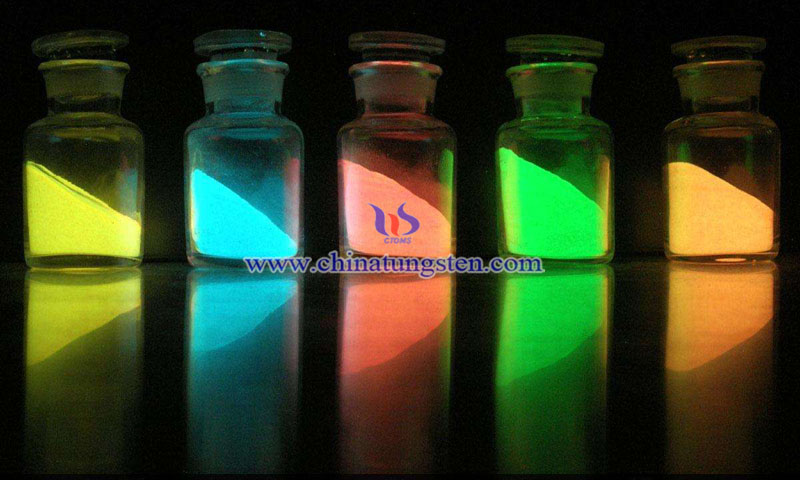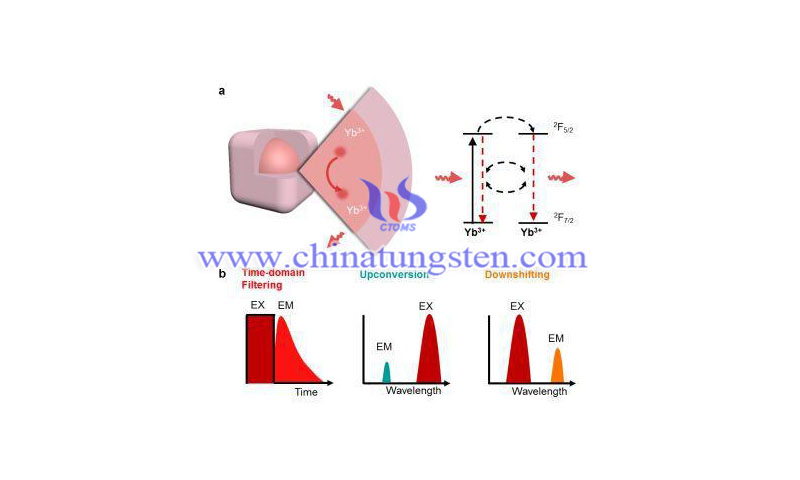Important Progress in Rare Earth Luminescent Nanoprobes
- Details
- Category: Tungsten's News
- Published on Wednesday, 31 July 2019 09:09
Luminescent probes are an important bio-visualization tool commonly used in many applications such as bioimaging and detection. Currently developed luminescent probes mainly include carbon nanotubes, fluorescent dyes, quantum dots and rare earth doped nanomaterials. Among them, rare earth nanomaterials have become a research hotspot due to their advantages of good light stability and low biological toxicity. However, the rare earth nanomaterials generally used have problems such as low quantum efficiency and small light absorption cross section, and the research on the regulation of their properties is at an exploratory stage.

Under the support of the national key research and development program “Nano Technology”, Professor Li Fuyou's research team at Fudan University has developed a class of nanoprobes with the same excitation and emission wavelengths and long luminescence lifetime, with rare earth elements Yb, Er, Tm, Nd. Etc. as the main doping element has a unique zero Stokes displacement photoluminescence. Such a probe is like a short-lived memory that continuously produces the same illuminating signal as the wavelength of the excitation light for a period of time after excitation. Although the traditional wavelength-based luminescence detection method cannot fully study the luminescence phenomenon, researchers have developed a new signal collection method by using the characteristics of this type of probe with longer luminescence lifetime, by controlling the illuminating collection window. After the pulse excitation, the excitation light is filtered out in the time domain to maximize the luminescence signal of such probes. For example, small-sized nanoparticles (~15 nm) with Yb as the main doping element have an emission intensity advantage of more than an order of magnitude compared to other commonly used luminescent materials. By adjusting the thickness of the shell in the core-shell structure, the luminescence lifetime of the material can be significantly adjusted.
In view of the unique properties of this type of material, the researchers developed it into a time-domain fluorescence imaging method for multi-channel decoding and live tracing in the time domain, and clinical applications such as passive targeting of tumors, showing broad application prospects.
 a “Zero Stokes Displacement” photoluminescence probe design; b time domain filter and other fluorescence detection methods
a “Zero Stokes Displacement” photoluminescence probe design; b time domain filter and other fluorescence detection methods
- Rare Earth Manufacturer & Supplier, Chinatungsten Online: www.chinatungsten.com
- Tungsten News & Prices of China Tungsten Industry Association: www.ctia.com.cn
- Molybdenum News & Price: news.molybdenum.com.cn
- Tel.: 86 592 5129696; Fax: 86 592 5129797; Email: sales@chinatungsten.com



 sales@chinatungsten.com
sales@chinatungsten.com